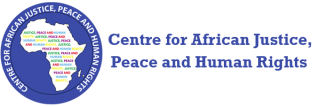- World Population Dashboard. [no date]. Available at: https://www.unfpa.org/data/world-population-dashboard [Accessed: 3 September 2020].
- Schools remain locked for more than 127 million children in Eastern and Southern Africa 2020. Available at: https://www.unicef.org/esa/press-releases/schools-remain-locked-more-127-million-children-eastern-and-southern-a frica [Accessed: 2 September 2020].
- Hygiene Baseline pre-COVID-19 Global Snapshot [no date]. WHO/UNICEF Joint Monitoring Programme for Water Supply, Sanitation and Hygiene (JMP)., p.4. Available at: http://JMP-2020-COVID-global-hygiene-snapshot.pdf [Accessed: 7 September 2020].
Snapshot of WASH in Schools in Eastern and Southern Africa 2013. Nairobi: United Nations Education Fund., pp. 3 and 8. Available at: https://www.unicef.org/wash/schools/files/Snapshot_of_WASH_in_Schools_in_Eastern_and_Southern_Africa(1).p df [Accessed: 8 September 2020].
Diarrhoeal disease. 2017. Available at: https://www.who.int/news-room/fact-sheets/detail/diarrhoeal-disease [Accessed: 7 September 2020].
- Education: From disruption to recovery. 2020. Available at: https://en.unesco.org/covid19/educationresponse [Accessed: 8 September 2020].
- Water, sanitation, hygiene, and waste management for the COVID-19 virus – Interim Guidance 23 April, 2020 WHO and UNICEF
- ‘What will a return to school during the COVID-19 pandemic look like?’. 2020. Available at: https://www.unicef.org/coronavirus/what-will-return-school-during-covid-19-pandemic-look [Accessed: 7 September 2020].
- Key Messages and Actions for COVID-19 Prevention and Control in Schools 2020. New York: UNICEF, World Health Organization and IFRC., pp. 4, 6 and 9. Available at: https://www.who.int/docs/default-source/coronaviruse/key-messages-and-actions-for-covid-19-prevention-and-contr ol-in-schools-march-2020.pdf?sfvrsn=baf81d52_4&gclid=EAIaIQobChMIqaPcso3X6wIVw-F3Ch38vQ0iEAAYAS AAEgKKdvD_BwE [Accessed: 7 September 2020].
- Burton M, Cobb E, Donachie P, Judah G, Curtis V, Schmidt WP. The effect of handwashing with water or soap on bacterial contamination of hands. Int J Environ Res Public Health. 2011;8(1):97-104. doi:10.3390/ijerph8010097


